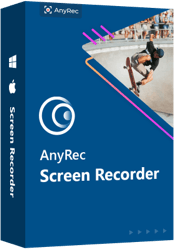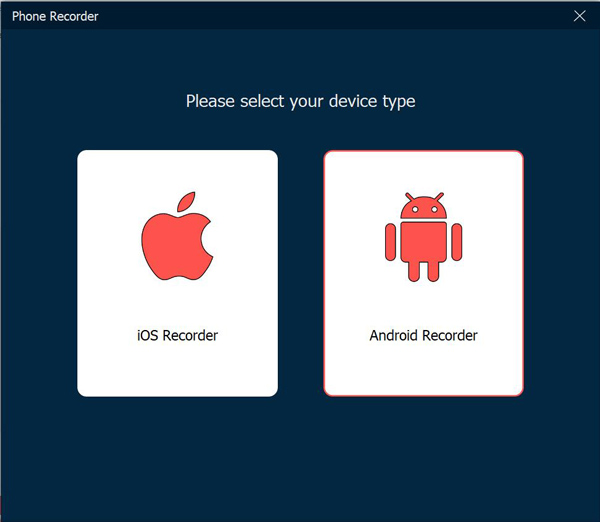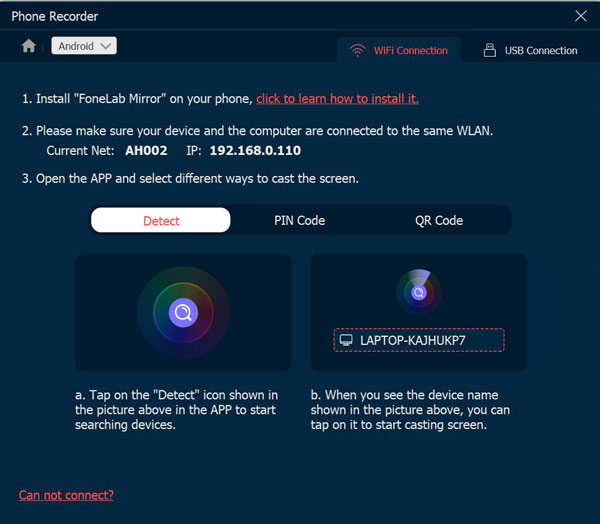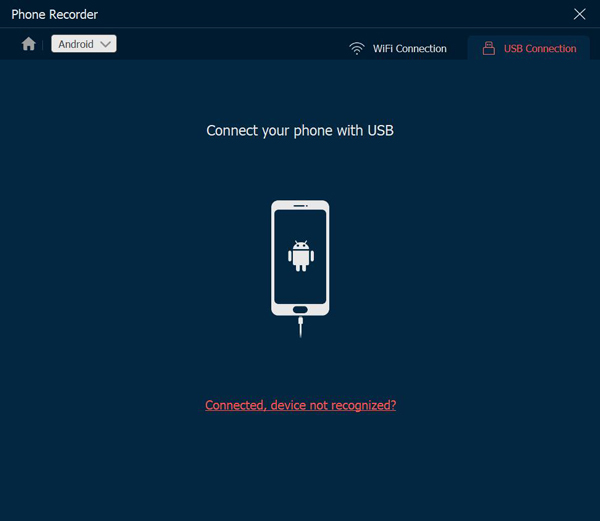How to Take Screenshot on Android? 8 Ways to Know and More
Ever need to quickly save something important on your Android screen, only to fumble with buttons? Depending on your phone, knowing how to take screenshot on Android comes in multiple ways, getting that perfect image of your screen. Forget the frustration of missed moments today as this post unlocks eight different ways to take screenshots on Android. This way, you can choose the fastest method and most convenient for you, every single time.
Guide List
How to Take a Screenshot on Android- • Use Volume Down + Power Buttons
- • Palm Swipe Gesture (Samsung)
- • Use Google Assistant
- • One Hand Operation + Diagonal Swipe
- • Screenshot on Android with the Notification Shade
- • Use Capture More and the Similar Scrolling Screenshot Option
- • Use Full Long Screenshot Capture App
How to Take a Screenshot on Android
Taking a screenshot on Android is a fast and crucial way to get what's happening on your screen saved. It could be a message, your core, or an error to report; knowing the ways available is a great help. Depending on your device brand and version, here's a breakdown of the five common ways how to take a screenshot on Android devices:
Use Volume Down + Power Buttons
It works for almost all Android phones, including Samsung, OnePlus, Xiaomi, Google Pixel, Vivo, Oppo, Motorola, and more.
- 1. Go to the screen page you want to capture.
- 2. Then, press and hold together the "Power" and "Volume Down" buttons until you see your screen flash, indicating a screenshot.

- Pros
- Quick and no need for setup; universal across most Android.
- Cons
- Can be tricky sometimes for hard-to-press buttons.
Palm Swipe Gesture (Samsung)
Meanwhile, this method can be used by Samsung Galaxy S and Note series users, as well as A-series and Z-Flip/Fold series.
- 1. Open "Settings", then go to "Advanced Features", to "Motions and Gestures".
- 2. There, enable "Palm swipe to capture". Now, swipe the edge of your hand horizontally across the intended screen page to capture.

- Pros
- No need to use buttons; easy to use.
- Cons
- Sometimes won't register if the gesture is too fast or slow; only works for Samsung.
Use Google Assistant
All Android devices running Android 7.0+ with Google Assistant enabled can take advantage of this way how to take screenshots on Android.
- 1. On your intended screen, say "Hey Google, take a screenshot" or you can type it in the Assistant, too.
- 2. Then, Google will capture your screen and allow you to share or edit it as needed.

- Pros
- Hands-free solution; quick and easy to set up.
- Cons
- Some apps blocked Assistant; needs an active internet connection.
One Hand Operation + Diagonal Swipe
Most Samsung Galaxy models running Android 10 and higher can use this method to take screenshots on Android, as well as some of those Android phones with 8.0 and above.
Step 1.Get the One Hand Operation from the Play Store. Launch it and grant all permissions. Then, turn on "One Hand Operation", then customize the "Left Handle" or "Right Handle".
Step 2.Afterward, tap on either chosen handle, scroll down and locate "Diagonal Up Swipe" or "Diagonal Down Swipe", then select "Screenshots" as the action to screenshot on Android phones.

Step 3.Perform now the set diagonal swipe from the edge of your Android screen, saving your screenshot instantly.
- Pros
- Perfect for larger-screen phones; the gesture stays secret on the edge.
- Cons
- Can interfere with in-app gestures; won't work fully on older versions.
Screenshot on Android with the Notification Shade
In this solution, most Android devices, including Samsung, Realme, Xiaomi, OnePlus, and more, can take a screenshot on Android screen.
- 1. Swipe down from the top to access the "Notification Shade".
- 2. There, tap on the "Screenshot" or "Capture" icon and your screenshot will be taken right away.

- Pros
- No need for button combinations; easy to access.
- Cons
- May not work on some models; a bit slower.
Take a Long Scrolling Screenshot on Android [for Webpages and Chats]
What about long webpages, whole chat conversations, or entire app screens that do not fit on one page? Well, Android offers scrolling screenshot features! Depending on your device and preferences, there are built-in and third-party ways available. See below the two common ways how to take long screenshots on Android smartphones:
Use Capture More and the Similar Scrolling Screenshot Option
The following Android devices have this built-in "Capture More" or other scrolling screenshot option: Samsung Galaxy S/Note/A and Z series (Android 11 and above), Google Pixel (Android 12 and above), OnePlus, Realme, OPPO, Xiaomi, and more. Follow the steps to take screenshots on Android with the whole page.
- 1. Using the "Power" + " Volume Down" buttons, take a regular Android screenshot. After that, tap on "Capture More" or a similar option.
- 2. Next, scroll or let auto-scroll through the full-page content. Tap "Save" when done.

- Pros
- Do not need extra apps; perfect for system apps and browsers.
- Cons
- May not work in all third-party apps.
Use Full Long Screenshot Capture App
Meanwhile, using an app for taking a full screenshot on Android will work on all Android phones running 6.0 and above.
- 1. For example, get the "LongShot" app from the Play Store. Launch it and tap on "Capture Web Page" or the "Start" button for a manual scroll capture.
- 2. Now, scroll slowly through the full-page content as the app records your screen. The app will stitch the images into a long screenshot on Android after.

- Pros
- Works in any app or webpage; has manual and automatic stitching options.
- Cons
- Needs extra installation; manual scrolling can lead to stitching errors.
Screenshot and Record Android Phone Flexibly
As said, some apps may block the screenshot feature, usually streaming apps. When it comes to this, you need a competent and reliable solution that takes screenshots on Android quickly. And you can do it better with AnyRec Screen Recorder. This flexible screen recorder allows you to mirror your Android phone to your computer, letting you record and capture seamlessly, from all apps or pages. It supports full HD and 4K recording, with system sound and mic input, as well as annotations to enhance your screenshots after. Whether you need it for your tutorial, gameplay, or just saving important chats, this fantastic tool gets the job done efficiently.

Can record your Android device (any model) in HD or 4K with no lag.
Select between Wi-Fi and USB connection for flexible screen mirroring.
Let you annotate while recording and take screenshots during the process.
Preview your videos and images and edit them before exporting.
Secure Download
Secure Download
Step 1.Launch AnyRec Screen Recorder on your computer and click the "Phone Recorder" from the main interface. A window will appear asking you to select your device type; choose "Android Recorder" to continue.

Step 2.You will now need to connect your Android device to the computer and then takes screenshots on Android. Here are the two ways:
• Via Wi-Fi: Ensure your Android phone and computer are linked to the same Wi-Fi network. Get the "FoneLab Mirror" app first on your phone, then launch it. Next, either tap "Detect", or scan the "QR Code" or enter the "PIN Code" on your computer screen to mirror.

• Via USB Cable: Perhaps you prefer a wired connection. Just simply plug your Android device into your computer using a workable USB cable. It is that fast and stable mirroring.

Step 3.Once connected, your Android screen will be seen in real-time on your desktop. From here, start recording whatever you want, like apps, games, or chats, even those streaming apps. During the process, you can take Android screenshots with the "Camera" button.
Step 4.Later, you can preview the recorded Android video, and you will see the captured screenshots on the right pane. Here, you can edit as needed before exporting.
Edit and Share Android Screenshots
After all the capturing on an Android device, you may want to crop, annotate, or highlight parts before sharing them. Thankfully, most Android phones offer built-in editing right after taking the screenshot. Whether you want to mark up, map, or send a quick visual reply, follow the instructions below on how to edit and share your screenshots on Android:
Step 1.After capturing your Android screen with one of the methods mentioned, a thumbnail will appear in the corner; please tap on it. If you missed it, go to your "Gallery" app. Or, you may see the "Edit" button right away.
Step 2.Next, use the editing tools like crop, rotate, or draw. Some devices also have add text, highlight, and blur options.

Step 3.Then, tap "Done" (Save or Update) to store the edited version. And you will see a "Share" button at this part, select how you want to share it, whether via Messages, Email, Cloud Storage, etc.
Fix Common Android Screenshot Problems
While taking screenshots on Android comes in simple processes, issues can occasionally arise. Whether it's the screenshot feature not responding, the image is not saving, or some apps are blocking screenshots, all these are frustrating. So, before concluding this post, here are the common Android screenshot issues you may face along with quick fixes:
Screenshot Feature Not Working
- 1. Restart your Android device to clear temporary glitches that prevent the feature from working. Next, check if the screenshot buttons are working individually.
- 2. If it is not, use Google Assistant or the Notification Shade option to screenshot on Android.
Screenshot Not Saving
- 1. Make sure your device's storage isn't full ("Settings" and then "Storage"). Also, ensure the Gallery app has permission to access storage.
- 2. After that, clear the cache for Media Storage by heading to "Settings", then "Apps", and "Media Storage".
Can't Screenshot Some Apps
- 1. If apps are blocking the screenshot (streaming or banking apps), and you can’t take screenshots due to security policy, try the Google Assistant to take a screenshot instead.
- 2. Otherwise, use the screen record option to record the screen and take a screenshot on Android from the video.
Screenshots are Blurry or Low Quality
- 1. If "Display Settings" are available, switch to a higher screen resolution. And avoid compressing the captured image when sending or saving it.
- 2. Alternatively, use a dedicated screenshot app that lets you take full-quality screenshots.
Conclusion
Taking screenshots on Android has never been more convenient! Today, you've seen a variety of methods that suit different Android devices and preferences. You can use button combinations, voice commands, gestures, or notification shortcuts, then edit and share your screenshot afterwards! For even more flexibility, especially for some restricted apps, AnyRec Screen Recorder is a powerful solution. It allows you to mirror your Android screen to your computer, capture high-quality screenshots with annotation tools, and record videos with ease.
Secure Download
Secure Download
